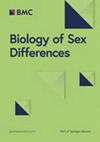Treating sex and gender differences as a continuous variable can improve precision cancer treatments
IF 4.9
2区 医学
Q1 ENDOCRINOLOGY & METABOLISM
引用次数: 0
Abstract
The significant sex and gender differences that exist in cancer mechanisms, incidence, and survival, have yet to impact clinical practice. One barrier to translation is that cancer phenotypes cannot be segregated into distinct male versus female categories. Instead, within this convenient but contrived dichotomy, male and female cancer phenotypes are highly overlapping and vary between female- and male- skewed extremes. Thus, sex and gender-specific treatments are unrealistic, and our translational goal should be adaptation of treatment to the variable effects of sex and gender on targetable pathways. To overcome this obstacle, we profiled the similarities in 8370 transcriptomes of 26 different adult and 4 different pediatric cancer types. We calculated the posterior probabilities of predicting patient sex and gender based on the observed sexes of similar samples in this map of transcriptome similarity. Transcriptomic index (TI) values were derived from posterior probabilities and allowed us to identify poles with local enrichments for male or female transcriptomes. TI supported deconvolution of transcriptomes into measures of patient-specific activity in sex and gender-biased, targetable pathways. It identified sex and gender-skewed extremes in mechanistic phenotypes like cell cycle signaling and immunity, and precisely positioned each patient’s whole transcriptome on an axis of continuously varying sex and gender phenotypes. Cancer type, patient sex and gender, and TI value provides a novel and patient- specific mechanistic identifier that can be used for realistic sex and gender-adaptations of precision cancer treatment planning. Some efforts to improve cancer therapy involve the idea of personalizing treatments to who a patient is and how their cancer operates. Personalizing treatment can involve straighforward features like a patient’s age, family cancer history, personal disease and surgical histories, as well as more complex features like analysis of their specific cancer’s mechanisms of growth and spread throughout the body. One glaring omission in common personalization schemes is the sex and gender of the patient. While patient sex and gender is known to substantially affect cancer rates and response to treatment, we do not yet use this information in treatment planning. There are multiple reasons for this but among them is that we tend to think about sex and gender as an either/or categorization. You are either a male/man or a female/woman. This is not accurate as there are many variables that contribute to who an individual is as a male/man or female/woman. This variability is a challenge to incorporating these features into personalized treatment planning. Here, we have developed a method to address this challenge. It is our great hope that this will enable the use of this critically important element of personalization in cancer treatment planning and improve survival rates for all patients.将性和性别差异作为连续变量处理可改善癌症的精准治疗
癌症发病机制、发病率和存活率方面存在的重大性别差异尚未对临床实践产生影响。转化的一个障碍是,癌症表型无法划分为明显的男性和女性类别。相反,在这种方便但臆造的二分法中,男性和女性癌症表型高度重叠,并在女性和男性两个极端之间变化。因此,针对不同性别的治疗方法是不现实的,我们的转化目标应该是根据性别对可靶向途径的不同影响调整治疗方法。为了克服这一障碍,我们分析了 26 种不同成人癌症和 4 种不同儿童癌症的 8370 个转录组的相似性。我们根据转录组相似性图谱中观察到的相似样本的性别,计算了预测患者性别的后验概率。转录组指数(TI)值来自后验概率,使我们能够识别出男性或女性转录组局部富集的极点。转录组指数支持将转录组解构为衡量患者在性别和性别偏倚的目标通路中的特异性活动。它确定了细胞周期信号转导和免疫等机理表型的性别倾斜极端,并将每位患者的整个转录组精确定位在持续变化的性别表型轴上。癌症类型、患者性别和 TI 值提供了一种新颖的患者特异性机理标识符,可用于对癌症精准治疗计划进行现实的性别适应。改善癌症治疗的一些努力包括根据患者的身份及其癌症的运作方式进行个性化治疗。个性化治疗可能涉及患者的年龄、家族癌症史、个人疾病史和手术史等直接特征,以及分析特定癌症的生长和全身扩散机制等更复杂的特征。在常见的个性化方案中,一个明显的疏漏就是病人的性别。众所周知,患者的性别会对癌症发病率和治疗反应产生重大影响,但我们还没有在治疗计划中使用这些信息。造成这种情况的原因有很多,但其中之一是我们倾向于将性和性别视为非此即彼的分类。你要么是男性/男人,要么是女性/女人。这是不准确的,因为一个人是男是女有很多变数。这种可变性是将这些特征纳入个性化治疗计划的一个挑战。在此,我们开发了一种方法来应对这一挑战。我们殷切希望,这将有助于在癌症治疗规划中使用这一至关重要的个性化元素,并提高所有患者的生存率。
本文章由计算机程序翻译,如有差异,请以英文原文为准。
求助全文
约1分钟内获得全文
求助全文
来源期刊

Biology of Sex Differences
ENDOCRINOLOGY & METABOLISM-GENETICS & HEREDITY
CiteScore
12.10
自引率
1.30%
发文量
69
审稿时长
14 weeks
期刊介绍:
Biology of Sex Differences is a unique scientific journal focusing on sex differences in physiology, behavior, and disease from molecular to phenotypic levels, incorporating both basic and clinical research. The journal aims to enhance understanding of basic principles and facilitate the development of therapeutic and diagnostic tools specific to sex differences. As an open-access journal, it is the official publication of the Organization for the Study of Sex Differences and co-published by the Society for Women's Health Research.
Topical areas include, but are not limited to sex differences in: genomics; the microbiome; epigenetics; molecular and cell biology; tissue biology; physiology; interaction of tissue systems, in any system including adipose, behavioral, cardiovascular, immune, muscular, neural, renal, and skeletal; clinical studies bearing on sex differences in disease or response to therapy.
 求助内容:
求助内容: 应助结果提醒方式:
应助结果提醒方式:


